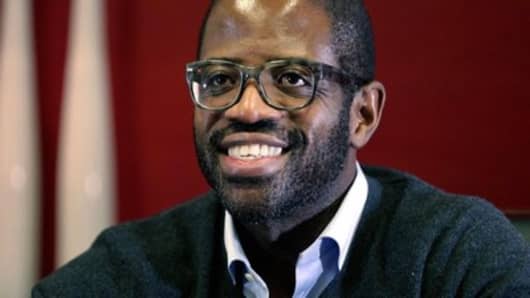Table of Contents

I’m often asked what has driven my career as a serial entrepreneur. Here are the steps that I go through for each new venture I embark on. I call them “The Five C’s” of entrepreneurship.
Creativity
The first act of creation is in the mind. Before you can do it, you have to think of it. It’s that simple.
A massive business opportunity is right in front of you. Right now. But do you see it? How about that new product that billions of people around the world want? Still don’t see? Trust me, it’s there. The biggest obstacle standing between you and the goals you want is your own creativity. Imagination is an ocean of wealth that anyone can access. It never runs out! Here are two practical steps to harness creativity as an entrepreneur.
First, practice awareness. Be more conscious of how you and others are feeling. Get off auto-pilot mode as you experience life. Annoyed you can’t find a cab? Delighted you could order food in one minute? Note it. Second, apply imagination to the pain or opportunity you’ve identified. These pains often linger in my mind for weeks, months and sometimes years before a solution comes to me. To nurture my imagination, I engage in meditation, music, travel or other activities that loosen my mind and snap me out of routines and habits. The magical moment is when the idea that cures the pain comes to you and you understand how a combination of business models, technologies, processes, products and go-to-market strategies will solve the problem.
Clarity
After you’ve thought through the business design that cures a pain, the next step I take is to focus on the precise nature of the opportunity. Is the market large enough? Who exactly is your customer or user? What are the other options to solve the problem? Is yours better?
“A massive business opportunity is right in front of you. Right now. But do you see it?”
One thing to watch out for at this stage is your ego. Are you engaged in selective listening, downplaying your potential customer’s concerns and over-valuing your solution? Do you just have third-party market research data or do you have an intimate knowledge of the problem or opportunity? It is very easy for the desire to become an entrepreneur to overshadow the importance of knowing the facts and, even worse, ignoring information that points to significant flaws in your business idea. I have made this mistake.
Conviction
After clarity on the attractiveness of the business opportunity, the next step is to get enough conviction to take action toward launching the business. Should you quit your job or invest your family’s savings to build a prototype? Only you can answer this question because everyone has a different species of fear. It is fear of all the things that can — and will — go wrong.
I’ve found that one of the best ways to manage this fear is through visualization. No data, market research or opinions of others will replace this. A powerful guide to overcome your fear is compelling imagery of the end goal in your mind. I remember “seeing” my start-up idea being popular and used by many as I pondered leaving the hedge fund I worked for in 2004. It was as if I got a sneak peek into the future and all I had to do was jump toward the inevitable. I quit my job in December and started working full time on my idea. I worked from my apartment with one developer in Russia building Hopstop, a company that would solve the problem of getting around large cities with the use of train, bus and walking. Apple acquired Hopstop in 2013.
Capital and Connections
An entrepreneur with the best idea in the world will not get funding nor find strong team members if they don’t have the relationship capital to get the attention of investors and potential employees. It is relationship capital that usually leads to venture funding (financial capital) or success in recruiting a strong team (human capital).
How many times have you found that perfect employee, adviser or investor on Linkedin and found you didn’t have the 1-2 degrees of connection needed for a warm intro? This is probably my biggest challenge as an entrepreneur for every company I’ve started. I am sure other entrepreneurs feel the pain of access and attention. It is also understandable that professionals have to make decisions on how to split their time between work, family and other commitments. So how do you allow strangers to connect with you while managing your limited time? That’s the problem my new start-up, Gigameet, plans to address. The company facilitates high-impact one-hour meetings for a fee and a portion of the fee goes to support the professional’s charity.
Concentration and Confidence
The next step is execution, which requires concentration. I was fortunate to have sat on HopStop’s board with Yaron Galai. He taught me about the importance of focusing on the core user proposition, product and experiments. There are countless resources to help you at this stage. If you are a first time Internet entrepreneur, I suggest you listen to all the videos by Y-combinatorand Michael Skok. The journey will always have highs and lows and you will often doubt yourself. Try not to. Have the confidence to continue pushing along until you’ve fine-tuned your product and found the levers for your business to achieve rapid growth. I wish you the best on your own journey.


